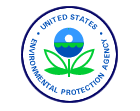
| National Risk Management Research Laboratory | ||

|
|
|||||||||
Shirco Infrared Incineration System
Click here for information about Portable Document File (PDF) Formats. or Click here to directly download the Acrobat Reader. (To view the PDF, it is recommended that you use the latest version of Acrobat Reader.)
Shirco Infrared Incineration System (2.41MB)
Abstract Gruppo Italimpresse, Rome, Italy, market an infrared thermal destruction technology originally developed by Shirco Infrared Systems, Inc. This technology uses electric infrared heating elements to heat solid waste to 1600oF (nominally), resulting in desorption or combustion of the organic contaminants. A key advantage of the Shirco infrared process is that it uses no fossil fuels in the primary combustion chamber. This greatly reduces total gas flow in the system and reduces the requirements for exhaust and pollution control equipment. This technology is suitable for soil or sediment with organic contaminants. Liquid organic waste can be treated after mixing with sand or soil. The system is limited to waste with particle sizes between 5 microns and 2 inches and no free liquid. Preprocessing may be needed to conform with these requirements. The system operates by conveying waste into the primary combustion chamber, exposing it to infrared heat, and discharging the treated furnace ash to a hopper. The combustion gases, which flow countercurrent to the conveyed feed, are treated in a propane-fired afterburner, quenched, scrubbed in a venturi emissions control system to remove particulate matter and acid gases, and then vented to the atmosphere. A SITE demonstration of a full-scale unit was performed during August 1987 at the Peak Oil Superfund site in Brandon, Florida. The site was once a used oil recycling facility and much of the surrounding soil was contaminated with PCBs and heavy metals. The system treated nearly 7,000 cubic yards of waste oil sludge containing PCBs and lead. System performance was assessed during three replicate runs by determining the PCB concentration in the furnace ash and calculating the DRE of PCBs. Results showed a furnace ash total PCB concentration ranged from 0.007 to 0.900 mg/kg. This was below the 2 ppm TSCA standard and the 1 ppm limit mandated by the EPA Region 4 On-Scene Coordinator. DREs ranged from 99.99972% and 99.99880%. The RCRA DRE standard is 99.99%, and the TSCA standard is 99.9999%. Higher DREs were not possible due to low total PCB concentration in the waste feed (3.48 to 5.85 mg/kg). The Applications Analysis Report contains other test results, including PICs and metals leaching. Costs based on the economic analysis ranged from $182 to $241/ton, excluding waste excavation, feed preparation, vendor profit, and ash disposal costs.
Posted July 12, 1999
|
|
|
|
|
|